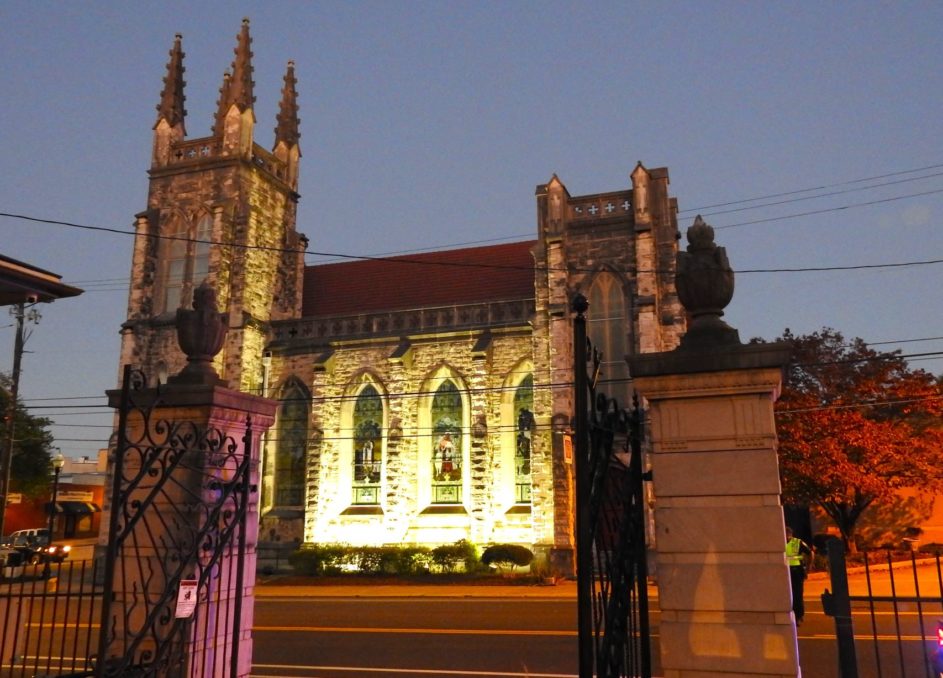As Halloween fades and the sun rises on All Saint’s Day, the regal St. John’s Lutheran Church looks across Broadway over all who rest in Old Gray Cemetery. The church organized nearly 135 years ago, in 1888, and the current building has stood at the corner of Broadway and 5th Avenue for over a century. The Gothic Revival sanctuary designed by Knoxville architect R. F. Graf was completed and dedicated in 1912.
Not quite downtown and not quite in North Knoxville/Fourth & Gill, it looks south to the Mission District that services the area’s homeless population, and north to the aforementioned neighborhoods where houses sell for hundreds of thousands of dollars.

One of the many stained glass windows at St John’s (Photo by Beth Kinnane).
While you certainly don’t have to be German to be a Lutheran, the history of the church originates in Germany, and immigrants established their churches here. Germans were in East Tennessee as far back as colonial times, but larger numbers (as with the Irish) began arriving in the 1840s. The first Lutheran church in Knoxville was (surprise surprise) First Lutheran, founded in 1869 and originally located at Broadway and Asylum Street (now Western Avenue). The current First Lutheran is just under a mile north of St. John’s on Broadway.
The origins of St. John’s weren’t rooted in the typical things (arguments over doctrine) that can tear a church asunder. It was something far simpler: language. Most early Lutheran churches in the U.S. continued the practice of delivering services in German. The 29 founders of St. John’s, many of whom were second or third generation German heritage Americans, wanted their church services in English.

The original First Lutheran Church, where congregants of St. John’s first worshipped. (Photo credit: First Lutheran Church).
There was no apparent animosity in the founding of the new church, however, which initially congregated at First Lutheran (then known as First German Evangelical Lutheran Church).
As with most Lutheran churches, St. John’s features a red door into its sanctuary, which is decorated with 61 stained glass windows. Of those, nine depict scenes from the Bible in chronological order. The vaulted ceiling rises to nearly 40 feet on quarter-sawn oak Hammerbeam trusses. Arches over windows and doorways as well exterior buttresses are among the many Gothic elements in the building’s construction.
St. John’s is listed on the National Register of Historic Places individually as well as being a contributing property to the Emory Place Historic District (see Dr. Jim Tumblin’s related story here). Today, in addition to serving its congregation, the church is consistently involved in outreach with the less fortunate in the neighborhood.
To learn more about the church, go here.
Beth Kinnane is the community news editor for KnoxTNToday.com.

